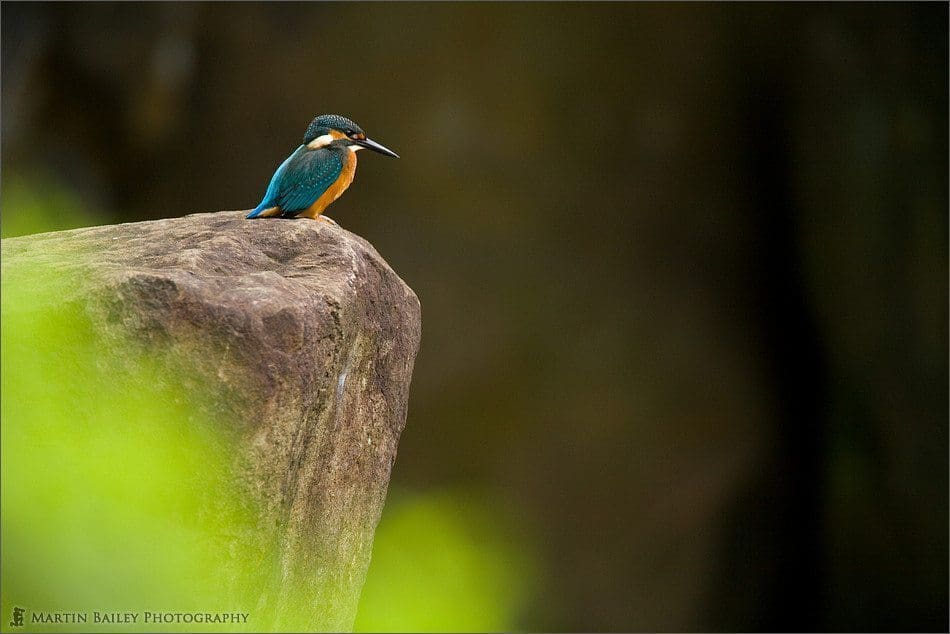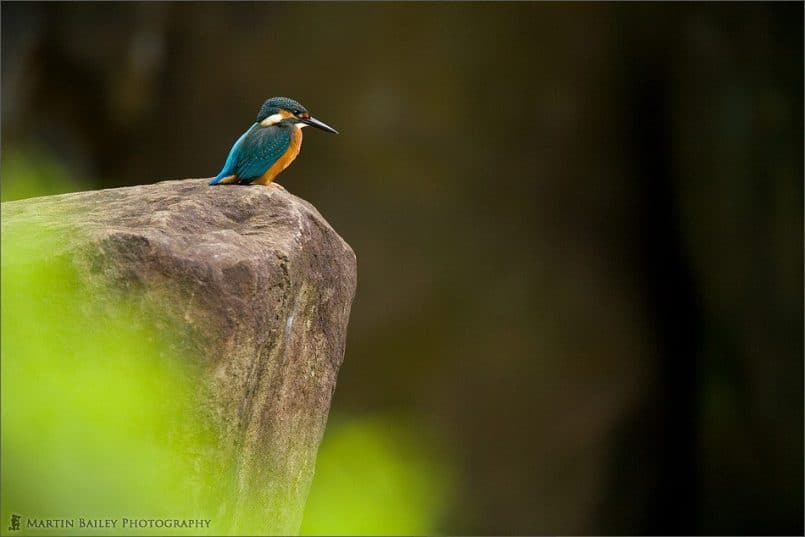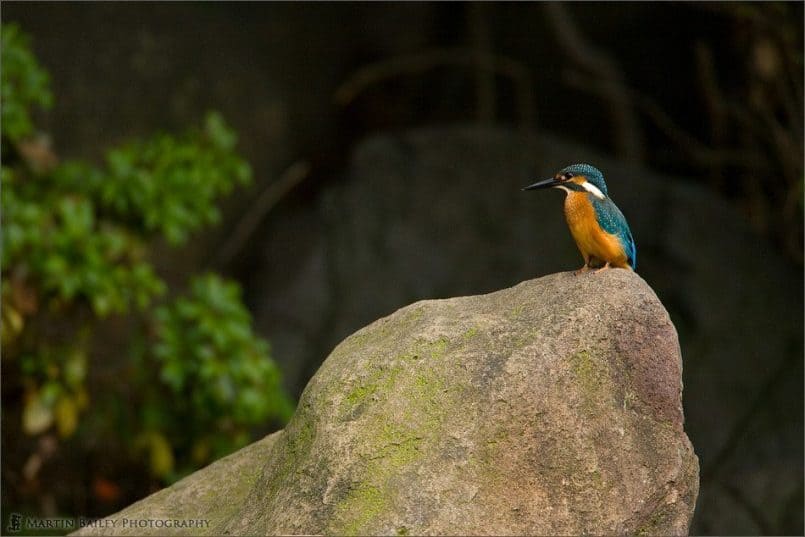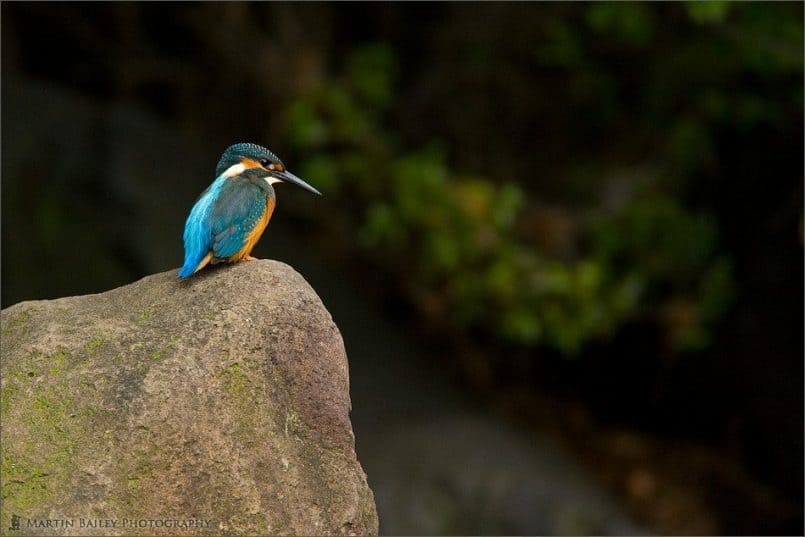Today I’m going to talk about a bit of luck I had on what was really not much more than a reconnaissance visit to a park and look at a few of the images that my luck resulted in. If you’ve already listened to the Photocast Network’s Focus Ring podcast, episode 7, you’ll already have an idea what I’m going to talk about. It was quite funny actually. It was just after 11PM and I was just about to turn my PC off and take a shower, when my Skype phone started to ring and I could see it was John Arnold, from the PhotoWalkthrough Podcast. At first I thought John was just ringing for a chat, and so after plugging in a small condenser mic I asked if John could hear me. Then, not only John, but Chris Marquardt from Tips from the Top Floor and Ibarionex Perello from The Candid Frame Podcast answered “Yes, we can hear you”. It turns out that the guys had agreed a time to record episode 7 and I’d not said I’d join because I wasn’t sure if I’d be able to make it. When they hooked up to record though, they saw me online on Skype and decided to rake me in. I’m really pleased they did too, as it was great fun as usual. If you don’t check out this Podcast, you really should, as it is well worth a listen. You can find it in iTunes by searching for Focus Ring, or go to photocastnetwork.com for various links. Anyway, as I had no time to prepare for the impromptu recording, I decided to talk about what I was toying with as today’s topic. I’ll go into much more detail here, and we’ll take a look at some shots too, so hopefully it will be worth you continuing to listen. Also, if you are interested in coming to Japan for a photography workshop and to shoot some incredible winter wildlife, listen to the housekeeping section at the end of this Podcast for details.
A few weeks ago in episode 93 I talked about the drama that unfolded before me with the Japanese Green Woodpecker family. During that visit, I’d heard of a place that I would be able to shoot Common Kingfishers. Of course, most birds are really active, gathering food for their young while they are actually feeding the young, and quite often, more so in the morning than the afternoon. Well, the fledglings would have left the nest already, and I had been busy with various things and not able to visit in previous weeks, and even on the day I visited, I really couldn’t get away early in the day, so it was the afternoon when I set out, and arrived at some time after 1PM. I got to the small pond where the Kingfisher apparently fished, and as I approached, I saw three men and one younger man standing in front of the pond. The younger man had a camera set up trained on a rock a few meters into the pond, and the three older guys were just standing talking. I walked up and said hello and asked if this was where I might see a Kingfisher. They replied that it was the right place, but the Kingfisher wasn’t around.
I heard that there’d been some 18 or so people there all morning waiting for one to show, but they’d had no luck and saw no Kingfishers. I figured so much, as the young will have flown the nest by now, but still, it was good to know that people were still turning up trying to catch the Kingfisher. Even the young would probably still be in the area and they all need to eat, right? It was a little disappointing, but really my main objective was to see if this was a possible venue for some shots next spring. It was about 30 minutes from my apartment, so I really had nothing to lose by coming down to take a look. The three men decided to leave too, and take a look around the park. I had extended the legs on my tripod and set it down on the floor while we spoke, but I decided too that I was probably out of luck, and I started to retract the legs and get ready to leave. I now knew where to come in the future. I’d heard which rocks the Kingfisher likes to sit on to fish, and I was ready for better luck next time, or so I thought.
As I turned to leave, I saw literally a blue streak flash behind me, going towards the end of the pond where I’d heard the Kingfisher rarely goes. I walked around to where the blue streak was heading, and sure enough, sitting on a rock, was a Common Kingfisher. The three guys were gone now, but the young man with his camera trained on the rock was still there. I whispered that the Kingfisher was there as I passed, but then realised that he had earphones in, so I tapped him on the shoulder and pointed to the Kingfisher. His face lit up and he followed me down as we tried to get closer.
One thing I’ve learned in recent years as I shoot more wildlife is that it’s always best to shoot what you can, when you can, and then start to push your luck. I kept my distance at first, and shot a few frames of the Kingfisher. The problem at first was that there was blue hosepipe from some construction running diagonally across the frame while shooting from this position, but it would have been better than nothing had the Kingfisher flew away. He didn’t though, so this time I walked across the grass of the area I was standing in, and set up a little closer. I decided to place a bush between me and the bird for two reasons. The first is so that I could hide myself to some extent, but I’d just passed through an open space, and the Kingfisher hadn’t flown away, so the main reason was artistic. Let’s take a look at image number 1491, in which we can see not only the Kingfisher standing on a rock, but also the effect of putting a bush between me and the subject. I think the green adds a nice touch, breaking up the mainly brown tones with some nice spring green. It also forms a base from which the boulder can enter the frame, so I’m relatively pleased with the effect. The other thing here is that the right side of the frame, in comparison to the relatively bright left side, gets gradually darker, also balancing it out as an image I feel. All of the images we’re going to look at today were shot with exactly the same settings. I was using my 5D and the 600mm F4 behemoth of a lens, with the 1.4X extender attached, giving me a focal length of 840mm.
The Kingfisher was relatively still, but even so, I didn’t want to go much slower than 1/100th of a second, so I raised the ISO to 500 to achieve that. I’ve gone into details about this many times before, so I won’t mention it again today, but I was shooting in Manual mode as the camera’s meter would not have been able to handle that dark background without a lot of exposure compensation. In this shot notice that I positioned the Kingfisher in the top left hand third intersection, using the rule of thirds. This gave the bird some space to look down into. In the next shot, image number 1492, you can see that I also tried the same composition but in portrait mode, instead of horizontal landscape mode. This actually helps to give us more of an idea of the height of the bolder on which the Kingfisher is perched, and he is now staring out of the frame much more. I think both works relatively well. Note too that I have cropped the top and bottom of this shot, as it seemed a little too tall without it, and the blue hosepipe that I mentioned was also creeping into the bottom of the frame here, in the five percent or so that I cannot see in the viewfinder.
This Kingfisher was really seemed to be settled down for a while. I’d shot 20 frames or so as I moved closer to get to this point, and he didn’t appear to be in a hurry to go anywhere. It was around this point that a man with his small son, maybe around 6 years old came by behind me and the man was trying to tell his sun where the bird was. “It’s that blue thing on the boulder over there” he was saying, pointing to the bird. It didn’t look as though it was about to start fishing, and with it being relatively dark and the water dirty, I didn’t think I was going to get a good shot even if I moved to a position to be able to do so, so I turned and offered my binoculars for the man to show the boy the Kingfisher more closely. As I turned, the man frowned and started to apologize. He obviously thought I was turning around to tell him to shut his sun up, as he was voicing the fact that he couldn’t see the bird quite loudly. I said it wasn’t a problem and handed the binoculars over. The boy still couldn’t see the bird, because it’s pretty difficult to point binoculars at something for someone else to look through as they almost always move away from the subject as soon as you take your eye away from them. I clamped my Wimberley Head tripod head down so that it wouldn’t move, and had the man lift his boy to the viewfinder of my camera, and he finally smiled and said that he saw the Kingfisher and walked away happy with his Dad.
Back to my shooting after a minute or so, and the Kingfisher moved from one boulder to another, enabling me to get a slightly different view, which we can see in image 1493. He’s facing us more now, and I’ve placed him along the right third line now, so that he is still looking into the frame. It’s important to give your shots balance by allowing them space to look into within your own image. Of course, as with all rules, this is not hard and fast. You can give your image some suspense or drama by having the subject look straight out of the side of the shot, but I don’t think it would have worked here. In addition to the fact that I was carrying binoculars, I’m going to give away the fact that I really am turning into a bit of birder by noting that we can tell this Kingfisher is one of this year’s fledglings by the fact that he still has orange feet. I learned this from a guy in the park and confirmed this in a book at home. As this bird gets older his feet will become a much deeper orange, almost red.
Finally, I want to look at one more shot, the last one I uploaded from this literally 10 minute shoot, which is image number 1494. Here we can see that the Kingfisher has turned facing his right again, so I’ve recomposed with him on the left of the frame. I’d snuck a little bit closer now, so I’ve got the subject a little larger, even though the rock is a little further away than the first. With wild birds, I don’t like to get too close, as I don’t shoot from a blind, and if I was to make him scared he might feel threatened and fly away, when he could have actually caught himself a fish dinner. I was starting to think that I might be able to get a little closer though, when what I’d feared happened. The boulder on which the bird is perched is actually right next to a series of stepping stones that cross the pond to where I’m standing. Indeed, the path into the park takes you across these stepping stones, and I’d walked across them myself around 30 minutes earlier. Well an elderly lady and a middle aged lady walked into the park across these stepping stones and the Kingfisher flew away, ending my 10 minute lucky streak.
I am pleased with the shots that I got in this short time, though they are not really prize winners. To really capture the beauty of these birds you need to get them actually jumping into the water to catch fish or in pairs, as you often see when they’re feeding young. I’m all set to go back next spring now that I know the location though, and I’ll hopefully be able to capture some images like this at that time. In addition to wanting to share these images with you today though, I really wanted to revisit a topic that I spoke about in some length in Episode 11 and on the Focus Ring Podcast last week and briefly a few other times too. We often go to great lengths to get to a location to shot images. Granted, on this day, I’d taken a steady 30 minute drive after lunch and was really not going to any great lengths, but quite often we plan and prepare and spend a lot of time and sometimes money to get to locations in the hope of shooting some stunning images. But, especially when it comes to nature, such as wildlife or landscape work, when we really have no control over the actions of our subjects or the weather conditions for example, we are not always guaranteed to get the shot we want.
We may come away with something else equally interesting or beautiful by being resourceful and resilient, which I’ve also covered in Episode 59, but to get what we want, it often comes down to luck. If you’re no there, no amount of luck will get you the shot of course, but no matter how waterproof we think our plans are, without that extra bit of luck that makes a bird that has eluded 18 photographers for an entire morning just fly by and sit on a rock for us for 10 minutes while we photograph it, it’s not going to happen. It was also just sheer luck that I turned around when I did. If I hadn’t turned around at that precise moment, I’d never has seen the Kingfisher fly by. I was standing looking at the main part of the pond. This was after all where everyone had said the bird prefers to fish! This is another tip. Get advice from others where you can, but don’t let that blind you to other possibilities. There are hundreds of plastic experts out there, so let’s stay alert, and govern our own actions based on all that we can learn from others.
So, a little on the short side today, and I hope if you did tune into the Focus Ring Podcast I’ve been able to make it worth you listening in here as well. If you haven’t caught up with the Focus Ring Podcast, I suggest you subscribe today in iTunes or your favourite Podcast aggregator. I’ll put a link to the Photocast Network Web site in the show notes, but it’s basically just photocastnetwork.com. There are usually up to four PhotoCast Network members discussing all things photography, and having a bit of a laugh at the same time, so well worth a listen. Of course all the members plus a fair few others listed have our own Podcasts and the quality of all of them is very high, so it’s a great place to find other photography related Podcasts if you’re running a little dry.
A quick reminder that there is now just one week left to get your entry in for the Movement Assignment. All entries should be shot after Monday the 25th of June, up until the end of the Assignment on August the 5th, 2007. You’ll be able to upload your entries to the assignment album on mbpgalleries.com until the end of Sunday the 5th of August anywhere in the world, so no need to worry about time-zones. For more details, take a listen to episode 92 and please do check the rules and guidelines in the Assignment Forum at martinbaileyphotography.com before uploading your image.
One other thing before we close is that I wanted to touch on something that I also mentioned in the Focus Ring Podcast, which is the possibility of an MBP Workshop in Hokkaido next January or February. I’ve been toying with this idea for a long time now and really not yet put any feelers out, but basically it would probably be around 4 or 5 days, possibly little longer in Hokkaido, which is the large island at the northern most part, the top of Japan. I’m targeting January and February because this is the coldest time and the best for capturing not only the ice flows on the sea, but also Steller Eagles and White Tailed eagles, as well as the beautiful Red-crowned cranes, and Whooper Swans. There’ll be dear and maybe if we’re lucky foxes and even owls. We’d take in some landscape photography too, but it will all be in conditions well below freezing, so you’d need good harsh weather clothing and preparation to keep your equipment not only safe, but functioning in these conditions. I will of course provide all the information you will need to know before the trip, and we’ll be doing interactive workshop training either out in the field, or in the hotels in the evening, depending on weather conditions and really make it a totally awesome photographic and learning experience for all that attend.
You will be responsible for getting yourself to Tokyo, Japan by the time we fly to Hokkaido, but I’m planning on keeping the cost of the rest of the trip, including the flight from Tokyo to Hokkaido, accommodation, transport around Hokkaido and workshop fees, all included in the package. I’m not sure right now how much it will cost though, as there’s a lot more planning left before I can calculate this. Of course, that’s all going to be a lot of work for me too though, so before I really get into that, for now, I’d really just like to hear from you if you are interested in such a workshop. With absolutely no obligation, please drop me a line. I’ll put you on the yet small but growing list of people to keep informed about this, and if the number reaches critical mass, which I’d say would be anything more than 15 people, then we’ll make this happen. I look forward to hearing from you.
But for now, thanks for listening, and we’ll talk again next week. Have a great week, whatever you’re doing, and stay lucky! Bye-bye.
Show Notes
You can find the Focus Ring Podcast from the PhotoCast Network members here: http://www.photocastnetwork.com/
The music in this episode is from the PodShow Podsafe Music Network at http://music.podshow.com/
 Subscribe in iTunes for Enhanced Podcasts delivered automatically to your computer.
Subscribe in iTunes for Enhanced Podcasts delivered automatically to your computer.
Download this Podcast in MP3 format (Audio Only).
Download this Podcast in Enhanced Podcast M4A format. This requires Apple iTunes or Quicktime to view/listen.

Posted on behalf of Martin by Michael Rammell, a Wedding Photographer based in Berkshire, England. Michael also has a long-standing passion for Nature & Landscape photography. To catch up with Michael, visit his Web site, and follow him on the following social networking services.













0 Comments